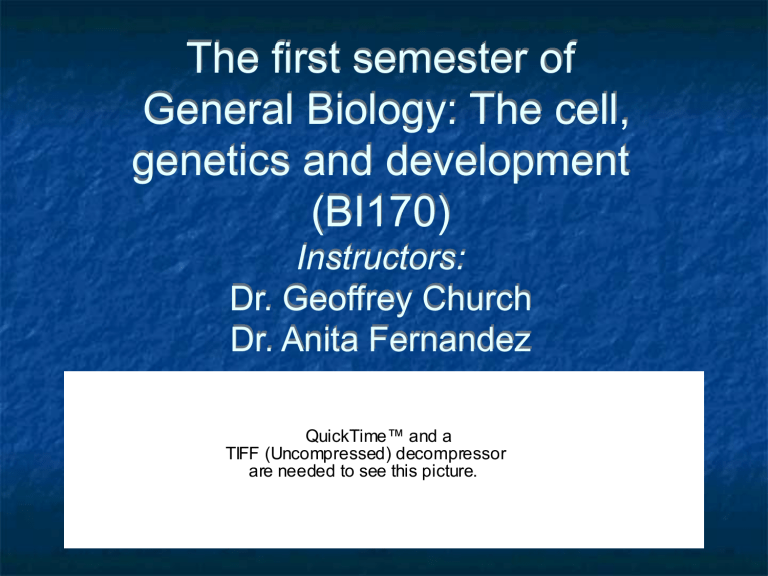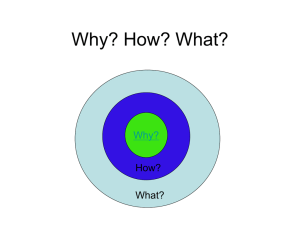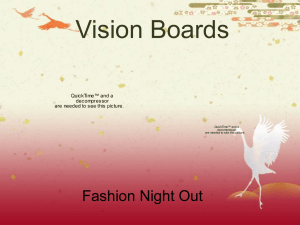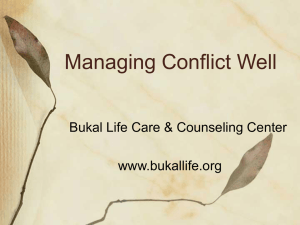Chapter 1 - Faculty Fairfield

The first semester of
General Biology: The cell, genetics and development
(BI170)
Instructors:
Dr. Geoffrey Church
Dr. Anita Fernandez
QuickTime™ and a
TIFF (Uncompressed) decompressor are needed to see this picture.
Announcements
Pre-Health student meeting tomorrow night @ 7:30 pm, here.
EMT course still open, starts tomorrow evening (Registrar)
No Gen Bio class on Friday. Go to convocation
The Syllabus
Your contract for the course (everything you can expect to have to do, and expect from the professors)
You can find it at http://www.faculty.fairfield.edu/biology/gen_bio/lecture_170.html
Print out a copy and keep it with your class materials!
-let’s take a look
General Biology website
(BI170, 171, & 172) http://www.faculty.fairfield.edu/gen_bio
BI170 Course Website
Course ID: BI170FALL09 http://www.masteringbio.com
iClicker Registration http://www.iclicker.com/registration
The Text Book
Biological Science 3rd ed. By Scott Freeman
Study aids are found online at MasteringBio.com
Managing Gen Bio with other courses/obligations
•Time management!
•Bio, chem, calc, English, core
•3 hours for every 1 hour in class for the sciences (2:1 for others)
What is covered? What isn’t?
Skipping chapter 2 (chemistry of water and basic bonding etc.)
-you’ll need to refresh on your own
Chapter 1
Cell Theory, Natural Selection, Tree of Life, experimental design and hypothesis testing, “Doing Biology”
Chapters 3, 4, 6, 7 (Skipping 5)
First Exam is Sept. 22nd (that’s only three weeks!)
Biology and the Tree of Life
Chapter 1
1.1 The Cell Theory
1.2 The Theory of Evolution by Natural Selection
1.3 The Tree of Life
1.4 Doing Biology
What is a theory?
Are there different meanings for the term theory?
How is it understood in science?
How does the word theory in science differ from its use in everyday English?
A.
B.
C.
D.
There is no difference —the usages are interchangeable.
A scientific theory is always right and never changes.
Scientific theories are testable explanations, not speculative guesses.
A scientific theory can be confirmed by a single experiment designed to prove its accuracy.
1.1 The Cell Theory
In the late 1660s, Robert Hooke and Anton van Leeuwenhoek were the first to observe cells
( Figure 1.1
).
…using only a crude microscope (mag of only 30X).
…using a more advanced microscope
(mag of 300X).
Are All Organisms Made of Cells?
By 1800’s, enough data was collected to support this theory. YES!
(with even better scopes today this is still the case)
So where do cells come from?
Louis Pasteur demonstrated that cells arise from cells and NOT by spontaneous generation ( Figure 1.2
).
Example of the scientific method.
QuickTime™ and a
decompressor are needed to see this picture.
The Cell Theory
(Virchow, 1858)
1.
2.
All organisms are made of cells.
All cells come from pre-existing cells.
This is one of the two fundamental theories in biology.
*What is the other one?
1.2 The Theory of Evolution by Natural Selection
In 1858, MOST scientists believed that species are independent and unrelated entities, which do NOT change over time.
Charles Darwin and Alfred Wallace INSTEAD made two claims:
All species are related through a common ancestor
Characteristics of species DO change over time
The Theory of Evolution
Evolution is the process by which species change over time while also being related to one another.
This is usually referred to as
“Descent with modification”
The UNIQUE contributions of Darwin and
Wallace came from their explanation of HOW evolution occurs. They called this process
“descent with modification” - later known as natural selection .
Theory of Natural Selection : Individuals in a population that possess more favorable, heritable traits produce more offspring than do individuals without those traits.
Two conditions must be met for natural selection to occur in a population:
(1) individuals in a population must differ from one another for some heritable trait(s); and
(2) individuals with certain heritable traits must survive and/or reproduce better than individuals with other traits (“fitness”).
…so,
In natural selection , the population’s characteristics will change over time as the individuals with the favorable traits produce more offspring, and increase in frequency.
We can control evolution! - Artificial Selection
Evolution by Natural Selection
Adapted from the University of California, Los Angeles Life Sciences 1 Demonstration Manual
Copyright 2008 by Jennifer Doherty and Dr. Ingrid Waldron, Department of Biology, University of Pennsylvania
Describe what is happening in figures 1-3. Is the population of mice different in figure 3 than in figure 1? Explain why.
What characteristic could lion XXXXX have passed on to his offspring to increase their survival?
1.3 The Tree of Life
The cell theory and the theory of evolution by natural selection imply that all species are descended from a single common ancestor at the root of a family tree of all organisms —the tree of life .
Linnaean Taxonomy (1735)
Linnaeus proposed a hierarchical system for classifying organisms. This was based on obvious features such as ability to move, ability to make own food, etc.
2-kingdoms at first
5-kingdoms (1960s)
Using Molecules to Understand the Tree of
Life!
Carl Woese and colleagues began comparing organisms at the level of ribosomal RNA
(rRNA) , a molecule found in all organisms.
They used this to understand the evolutionary relationships among organisms.
• The rRNA tree of life reflects PHYLOGENY. It suggests three major groups of organisms, termed
“domains”.
Doing Biology
Why are chilies hot (capsaicin)?
QuickTime™ and a
decompressor are needed to see this picture.
QuickTime™ and a
decompressor are needed to see this picture.
QuickTime™ and a
decompressor are needed to see this picture.
Predictions?
QuickTime™ and a
decompressor are needed to see this picture.
QuickTime™ and a
decompressor are needed to see this picture.
QuickTime™ and a
decompressor are needed to see this picture.
What to do BEFORE next week’s class
•Register for Mastering biology at www.masteringbio.com
using your access code from your book and the course ID
•Our class ID is BI170FA09
•Complete assignments on MasteringBio
•Register your “clicker” at www.iclicker.com
•PLGs do not begin until next week (Tues, Wed, Thurs)
Read Chapter 3 up to page 58.





